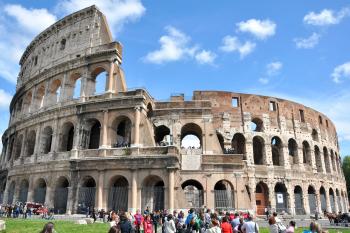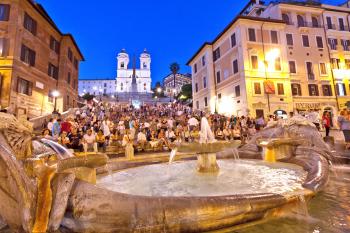What's new in Rome and Naples for 2020
Appears in the Online Edition, February 2020.
Rome is nicknamed "The Eternal City" and nowadays it could also be referring to the lines you'll wait in. The city (along with Naples) is better organized than ever for the huge crowds that descend on it each year -- but only for those who equip themselves with good information and use it. These tips may be wonky, but for smart travelers in 2020, they will translate into many precious hours saved -- and lots of sweat avoided.
Rome's big sights continue to tinker with ticketing procedures and crowd-control measures. For instance, travelers who want to tour the Colosseum must book an entry time when buying their ticket (which also covers the nearby Roman Forum and Palatine Hill). Reservations can sell out weeks ahead, so it's essential to buy your ticket online, well in advance of your visit (visit www.coopculture.it).
Even with reserved entry times, the Colosseum can still feel packed. I know it sounds like a sacrilege, but travelers may want to consider skipping the inside of the Colosseum to avoid suffering through the mob scene. In my opinion, half the thrill of the Colosseum is seeing it from the outside. Instead, you can enjoy the magnificence of ancient Rome with a thoughtful visit to one of the city's quieter sights, such as the Baths of Caracalla, south of the Roman Forum. Even in peak season, you'll often be all alone with the wonders of the ancient world, wondering, "Where is everyone?"
If you decide to skip the Colosseum interior, but you still want to visit the Roman Forum and Palatine Hill, purchase the "SUPER" combo-ticket, which also covers access to some smaller but worthwhile sights at the Forum and on Palatine Hill (keep in mind this ticket does not include the Colosseum). These "minor" sights include the Palatine Museum, House of Augustus, House of Livia, and the recently opened Domus Transitoria -- Nero's first palace on Palatine Hill, complete with virtual reality headsets that help reconstruct what the palace once was like (you must book an entry time when you buy your ticket).
Rome might be famous for its ancient sights, but the modern Welcome to Rome exhibition near Piazza Chiesa Nuova gives visitors a fun and informative introduction to the Eternal City. A series of four high-tech dioramas featuring famous Roman sights -- Castel Sant'Angelo, Imperial Forums, Forum of Augustus, and St. Peter's Basilica -- show how each was built.
At the Vatican Museums, home of the Sistine Chapel, Friday evening visits are now being offered consistently from mid-April through October from 7 until 11 p.m., when crowds are limited. Another less conventional option is to book a guided tour of the Vatican Gardens, which then lets you enter the museums. Both of these must be reserved online in advance.
Pilgrims should note that the American Catholic Church in Rome has moved its headquarters to St. Patrick's Church near the U.S. Embassy. The parish welcomes pilgrims to the city, arranges papal audience tickets, and lists convents that rent out rooms on its website (www.stpatricksamericanrome.org). It's an excellent resource for pilgrims.
In an effort to preserve Rome's historic sights, the city has introduced hefty fines to curb bad behavior from visitors. Several tourists have been fined for jumping in the Trevi Fountain, and last year the city government enacted a ban on sitting on the city's iconic Spanish Steps. Violators could face a 250 euro fine (or more, if they damage anything).
Italy intensifies as you go south of Rome to Naples, the country's third largest city. Due to construction throughout the city, Naples' tram -- useful for connecting the cruise port to the center -- is not currently running. To help visitors reach the excellent Capodimonte art museum (on a hilltop north of the city center), the CitySightseeing bus company now runs a shuttle from Naples' center to the museum, stopping en route at the city's famous Archaeological Museum.
Naples is less than an hour from Pompeii, and improved transportation options makes day-tripping there more convenient than ever. In the past, the standard way has been by the Circumvesuviana commuter train, which tends to be dingy, hot, congested, and full of pickpockets. But now, CitySightseeing offers a shuttle bus from Naples' cruise port and train station to Pompeii. It runs three times a day in summer and takes just 30 minutes. Each bus has a set return time (about three or four hours after arriving) so riders must plan their visits accordingly. Another option is the Campania Express tourist train, which runs several times a day in peak season using the same tracks as the Circumvesuviana, but is less packed, more secure, and has air-conditioning.
My mark of a good traveler is how they enjoy Italy. And, when it comes to navigating the popular and crowded sights of Rome and Naples, enjoying Italy requires some planning ahead.
(Rick Steves (www.ricksteves.com) writes European travel guidebooks and hosts travel shows on public television and public radio. Email him at rick@ricksteves.com and follow his blog on Facebook.)


